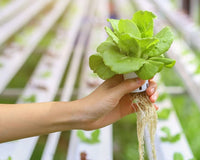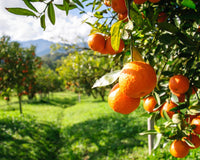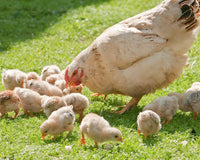For a garden to be considered sustainable, gardeners need to use gardening practices that cause no harm to the environment and its inhabitants. So, what about pest control and diseases? How can we cause no harm to the environment while protecting our gardens? The answer is actually pretty simple through monitoring and using mindful products and practices. We are going to scratch the surface of some of these practices today.
Integrated Pest Management (IPM)
Integrated Pest Management (IPM) is an effective and environmentally mindful approach to pest control that relies on a combination of common-sense practices. IPM programs utilize information on pest life cycles and their interaction with the environment in order to manage pests with the least possible hazard to people, property, and the environment. Actions in IPM programs can range from growing a crop that can withstand pest attacks, such as growing tall corn on the border of gardens and farms, to growing disease resistant crops.

Monitoring
Monitoring is an essential component in IPM programs. Through in depth monitoring you can pests in early stages before they become problematic infestations and find the best management strategy going forward. This removes the necessity to use pesticides when they are not needed or that one too strong for the situation is added to the garden. Instead, it adds the necessary time to use alternative and natural pest controls that won’t add harmful chemicals to your home environment.
Controls
The most effective, long-term way to manage pests is by using a combination of monitoring methods in tangent with a control method. There are multiple non-chemical control types that can be used around the home.

Biological Controls
Biological Controls use natural enemies to control pests and their damage. This means pests and diseases are delt by utilizing naturally, occurring controls. Products contain things like specially selected natural microbes that compete and crowd out diseases that would damage the plant. This also means products that repel harmful pests like aphids and thrips but support natural predators and beneficial insects like bumble bees and ladybugs. By utilizing predators, parasites, pathogens, and competitors, biological controls support plant health in a way that is chemical free and adds no harm to the environment – exactly what sustainability is all about.
Chemical Controls
When a pesticide is needed in an IPM program it is important to use the most select pesticides that will do the job and be the safest for other organisms and the environment. This can be done through bait stations or spot sprays like Weed Zap on a few weeds rather than an entire area. Or the use of pesticides with natural ingredients to combat pesky insects such as whiteflies, thrips, aphids, and spider mites over more toxic chemicals. Natural ingredients can include things like essential oils such as the ones in Pest Out.

Conclusion
We are so excited to begin the new year with advice on how to make 2022 gardening more sustainable and Earth conscious. Sustainability and environmentally consciousness is very important for us going forward and we are passionate about delivering information on how we can all do our part to help. Stay connected with us via Instagram and Facebook for upcoming blogs and product recommendations.






